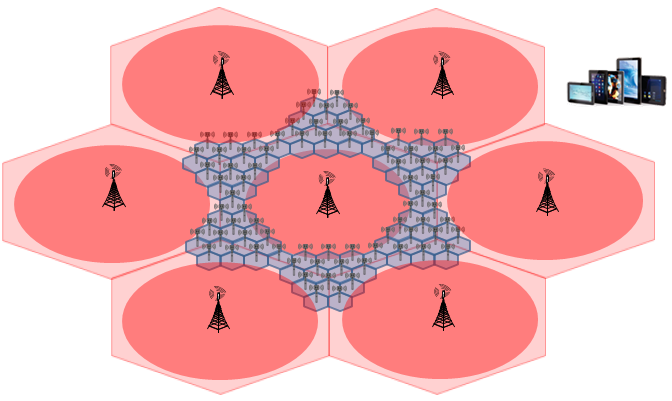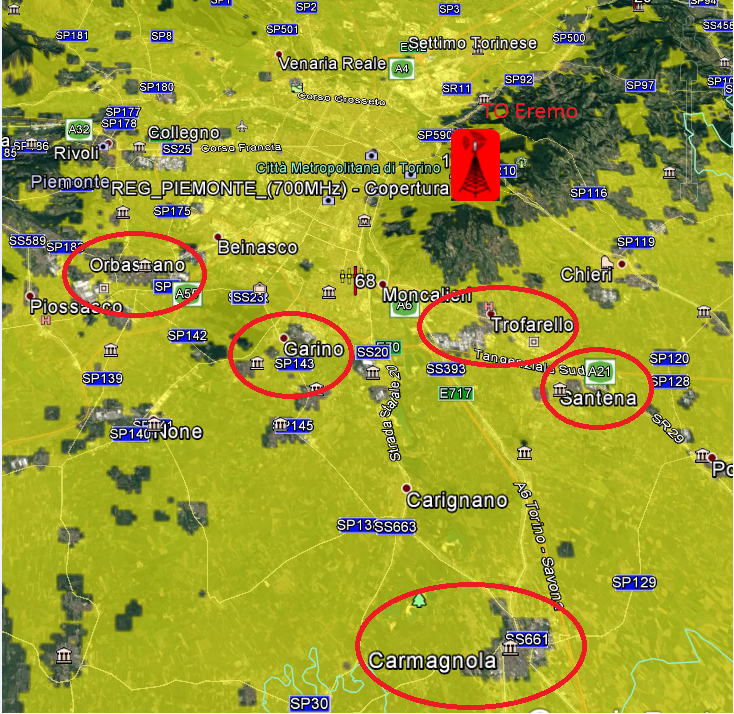Long term perspectives of DTT Convergence towards 5G: Applications of 3GPP Rel-14 to Italian scenarios
3GPP has defined in Release 14 the new eMBMS system, whose characteristics are well aligned to the technical requirements coming from the broadcast sector for TV services. This paves the way to broadcasters and content aggregators to deliver mobile-TV content over cooperative broadcast High Power High Tower (HPHT) and mobile Low Power Low Tower (LPLT) network infrastructures, using a converging broadcast 3GPP technology. In a longer term perspective, in the 2020 decade, may this full-IP convergent technology become a candidate successor of DVB-T2 (or ATSC or ISDB-T) also for DTT (Digital Terrestrial Television) home services?

Rai, in its migration strategy from a conventional Public Broadcaster to a digital Media Company, intends to deliver high quality video services anywhere – in the living room and on the move – with any suitable technology and on any device: TV-set, lap-top, tablet and smart-phone .
3GPP, the International Standardization Body which defines the Mobile technologies worldwide, with the contribution of RAI CRIT together with EBU (European Broacasing Union) and the Mobile Industry, has recently defined a new profile (feMBMS, Rel.14) for multicast TV and media service delivery, which is applicable to new 4G and 5G terminals.
The Rel.14 features are well aligned to the functional and technical requirements coming from the broadcast sector (in particular from the EBU and RAI) for TV services. Among others, on the transmission part, the support of a larger inter-site distance in SFN (up to 40-60 Km), the possibility to have a dedicated feMBMS carrier for Digital TV (while the previous systems only allowed a 60% sharing of the frequency resources between TV multicasting and conventional mobile services), the introduction of a receive-only mode for the device, without the need for a subscription to a Mobile Network Operator service. These features may enable broadcasters and content aggregators to deliver mobile-TV content over cooperating mobile LPLT (Low-Power, Low-Tower) and broadcast HPHT (High-Power, High Tower) network infrastructures, using a converging 3GPP technology.
Rai-CRIT is currently analysing 3GPP Rel-14 main features and investigating its performance in theoretical regular networks and in the real example scenario of some selected Italian areas. Both mobile TV and fixed roof-top reception are considered.
The coverage picture of the examined areas shows that HPHT and LPLT cooperation guarantees coverage of the whole territory, with rural/suburban outdoor mobile and fixed roof-top coverage provided by HPHT network, and the LPLT network to complete the mobile coverage in the urban areas. The figure shows the HPHT network coverage in the Torino area: urban centres far from the HPHT transmitters are not covered and require the addition of LPLT transmitters.
This preliminary exercise seems to indicate that 3GPP Rel. 14 could represent an important instrument for a successful mobile-TV converged scenario after 2020, exploiting the synergies of HPHT and LPLT network infrastructures.

More information
Authors: Assunta De Vita, Rossella Gaffoglio, Vittoria Mignone, Alberto Morello
References
[1] 3GPP TR 38.913 V0.4.0 (2016-06). “3rd Generation Partnership Project; Technical Specification Group Radio Access Network; Study on Scenarios and Requirements for Next Generation Access Technologies”; (Release 14).
[2] OFCOM Digital Day (2016): https://www.ofcom.org.uk/research-and-data/multi-sector-research/digital-day
[3] Recommendation ITU-R P.1546-5; Method for point-to-area predictions for terrestrial services in the frequency range 30 MHz to 3000 MHz, ITU-R, Geneva, 2013
[4] Report ITU-R BT.2254-2, Frequency and network planning aspects of DVB-T2, ITU-R, Geneva, 2014
[5] Recommendation ITU-R BT.419-3, Directivity and polarization discrimination of antennas in the reception of television broadcasting, Geneva, 1992.
[6] Recommendation ITU-R P.1812-4, A path-specific propagation prediction method for point-to-area terrestrial services in the VHF and UHF bands, Geneva, 2015.